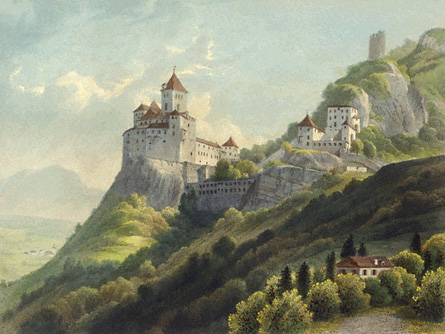
![]()

![]()
Land in the Middle Ages was the key to wealth and power and the land was controlled from the castles. The most powerful person in the kingdom was the king. The king's word was law and he could have a person thrown into jail or have a person beheaded if he so ordered.
The king owned the land and allowed his nobles to hold land if in return, they promised to protect him against his enemies. In return, the nobles gave pieces of land, or fiefs to other knights who promised to fight for them. The arrangement of giving land in return for loyalty or service was known as the feudal system, or feudalism.
There were three classes of society in the Middle Ages. People either fought, prayed or worked for a living.







King and Queen Bishop Lord and Lady Knight Peasants and Serfs
The feudal system is easy to understand if you think of it as a pyramid. As mentioned, the king was at the top of the pyramid and the head of the feudal society. Under the king were the vassals, or nobles who were given land and castles by the king for their promise of protection and loyalty to him in time of war. A powerful noble could be an overlord to less wealthy nobles and have vassals of his own. At the bottom of the pyramid were the peasants and serfs who worked the land.
Everyone in the feudal system knew their place in the pyramid. The king gave orders to the lords, the lords gave orders to the knights, and the peasants received orders from everyone!
Most people in Europe were Christians. Numerous churches and cathedrals were built and most of the castles had their own chapel.
Workers
in the castle included blacksmiths, craftsmen, the merchants who bought
and sold goods, and of course the peasants, who worked the land and served the
upper nobility.
![]()